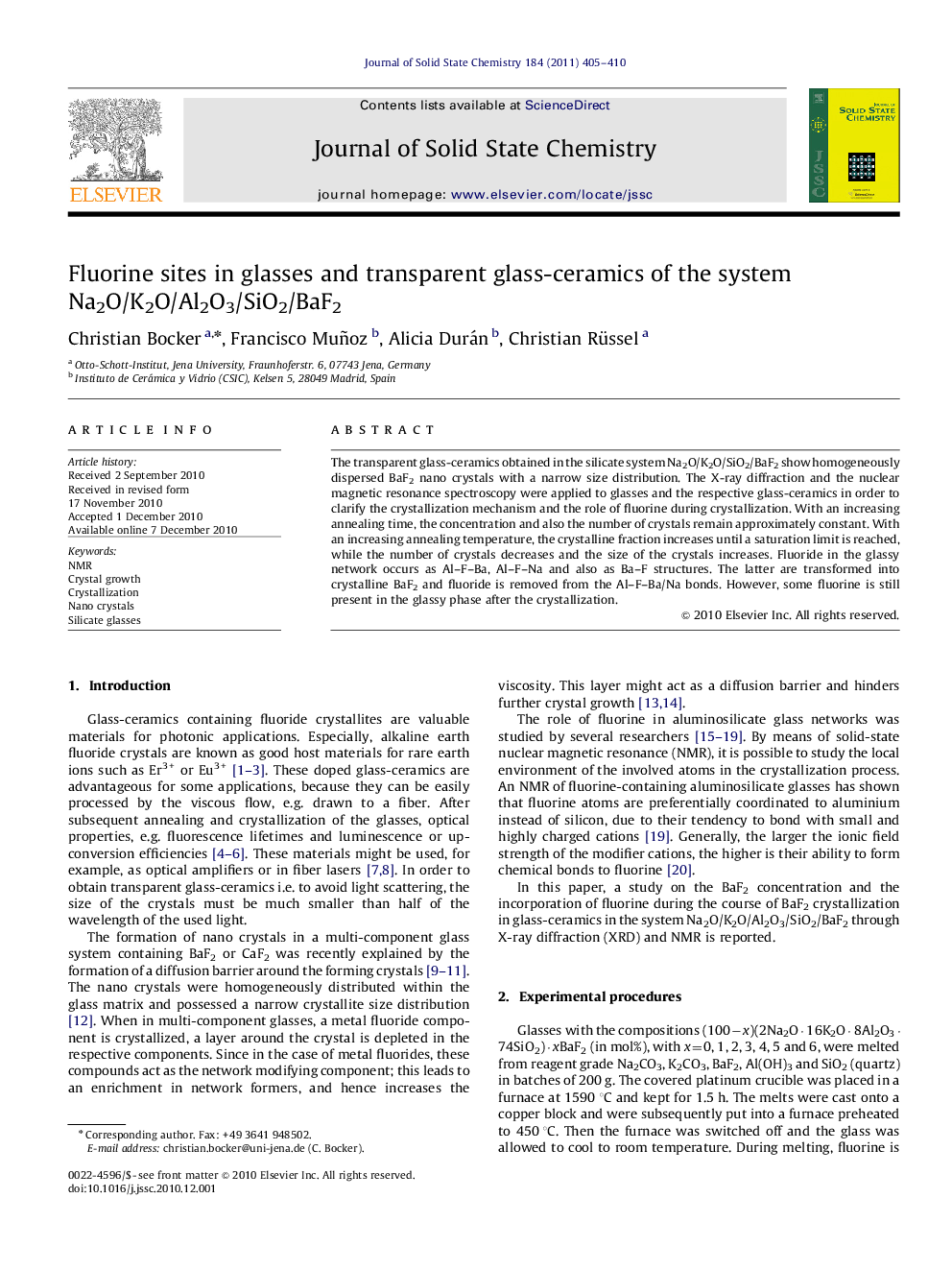| Article ID | Journal | Published Year | Pages | File Type |
|---|---|---|---|---|
| 1331017 | Journal of Solid State Chemistry | 2011 | 6 Pages |
The transparent glass-ceramics obtained in the silicate system Na2O/K2O/SiO2/BaF2 show homogeneously dispersed BaF2 nano crystals with a narrow size distribution. The X-ray diffraction and the nuclear magnetic resonance spectroscopy were applied to glasses and the respective glass-ceramics in order to clarify the crystallization mechanism and the role of fluorine during crystallization. With an increasing annealing time, the concentration and also the number of crystals remain approximately constant. With an increasing annealing temperature, the crystalline fraction increases until a saturation limit is reached, while the number of crystals decreases and the size of the crystals increases. Fluoride in the glassy network occurs as Al–F–Ba, Al–F–Na and also as Ba–F structures. The latter are transformed into crystalline BaF2 and fluoride is removed from the Al–F–Ba/Na bonds. However, some fluorine is still present in the glassy phase after the crystallization.
Graphical abstractThe X-ray diffraction and the nuclear magnetic resonance spectroscopy were applied to glasses in the silicate system Na2O/K2O/SiO2/BaF2 and the respective glass-ceramics with BaF2 nano crystals in order to clarify the crystallization mechanism and the role of fluorine during crystallization.Figure optionsDownload full-size imageDownload as PowerPoint slideResearch highlights► BaF2 nano crystals are precipitated from a silicate glass system. ► Ostwald ripening during the late stage of crystallization does not occur. ► Fluorine in the glass is coordinated with Ba as well as Al together with Ba or Na.► In the glass-ceramics, the residual fluorine is coordinated as Al–F–Ba/Na.
